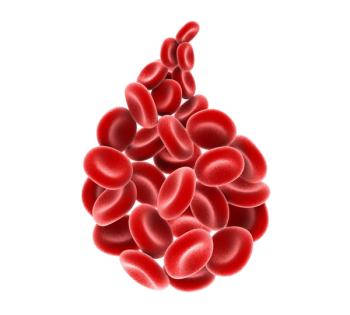
R-CHOP Regimen Underused in Elderly DLBCL Patients
Despite an association with improved survival, elderly DLBCL patients are less likely to receive standard-of-care chemotherapy with R-CHOP.
Patients with diffuse large B-cell lymphoma (DLBCL) aged older than 80 years were significantly less likely to receive standard-of-care chemotherapy with rituximab, cyclophosphamide, doxorubicin, vincristine, and prednisone (R-CHOP) compared with younger patients, according to the results of a recent study.
However, R-CHOP was the only chemotherapy regimen associated with an increased overall survival and lymphoma-related survival among this patient population.
“These findings indicate that very elderly patients with DLBCL who can tolerate R-CHOP should be treated with this regimen,” wrote researchers led by Jessica N. Williams, BS, of Emory University School of Medicine in Atlanta. “Clinicians should consider functional status and comorbidities when making treatment decisions for individual patients.”
The researchers looked at presentation, treatment, and survival in a group of 4,635 patients with DLBCL taken from the Surveillance, Epidemiology, and End Results (SEER)-Medicare database. Of these patients, 1,156 (25%) were aged older than 80 years.
Treatment patterns showed that patients aged older than 80 were significantly more likely to be recommended for observation and were less likely to receive CHOP or R-CHOP regimens when compared with patients aged 66 to 80 (P < .0001 for both).
“However, approximately 25% of patients aged > 80 years had no initial therapy recorded within the 6 months after diagnosis,” the researchers
Data showed an increased likelihood of receiving R-CHOP in patients aged older than 80 who were married, had stage III/IV disease, and had received radiotherapy or growth factor therapy.
“These results suggest that the failure of very elderly patients with DLBCL to receive standard treatment is associated with clinical factors, but also may vary across demographic factors such as marital status,” the researchers noted.
The researchers found that treatment with R-CHOP was the only regimen associated with an increased overall survival (hazard ratio [HR] = 0.45; 95% confidence interval [CI], 0.33–0.62) and lymphoma-related survival (HR = 0.58; 95% CI, 0.38–0.88). However, those patients who received R-CHOP also had higher rates of hospitalization compared with their younger counterparts (74.9% vs 66.2%; P = .0001).
Newsletter
Stay up to date on recent advances in the multidisciplinary approach to cancer.

















































































